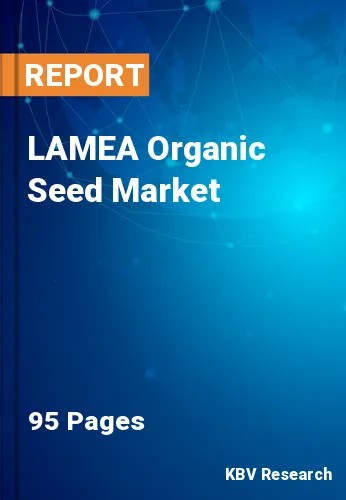The Latin America, Middle East and Africa Organic Seed Market would witness market growth of 15.2% CAGR during the forecast period (2023-2030). In the year 2026, the LAMEA market's volume is expected to surge to 117.4 Million Units, showcasing a growth of 16.7% (2023-2030).
As climate change challenges agriculture, developing these varieties adapted to changing environmental conditions has gained prominence. Breeding organic crops with characteristics such as resistance to heat, drought, and fluctuating soil conditions guarantees their durability in the presence of climatic unpredictability. The breeding programs are tapping into the natural genetic variation present within plant populations. By identifying and selecting plants with inherent drought tolerance, breeders aim to propagate traits that enable crops to withstand periods of water scarcity.
Modern breeding technologies, including genomics, are employed to identify stress-responsive genes associated with drought tolerance. This knowledge allows breeders to target specific genetic markers, facilitating the development of these varieties that exhibit enhanced resilience to water stress. The breeding emphasizes traits related to root architecture and water-use efficiency. Crops with well-developed root systems can access water stored in deeper soil layers, improving drought resistance. Breeding for enhanced water-use efficiency ensures that organic crops optimize available water resources.
Consumers in the LAMEA region, like many other parts of the world, are increasingly becoming aware of the benefits of organic foods. The demand for organic products, including fruits, vegetables, and grains, is rising. This increased demand could drive the expansion of the market. Government support and regulations play a crucial role in the growth of the organic sector. Initiatives such as subsidies for organic farming, certification programs, and sustainable agriculture practices can encourage farmers to shift towards organic cultivation, thereby boosting their demand. Thus, growing consumer demand for organic food and government initiatives promoting organic farming in the LAMEA region is expected to help expand the regional market.
The Brazil market dominated the LAMEA Organic Seed Market, by Country in 2022, and would continue to be a dominant market till 2030; thereby, achieving a market value of $297.7 Million by 2030. The Argentina market is showcasing a CAGR of 16.4% during (2023 - 2030). Additionally, The UAE market would register a CAGR of 14.7% during (2023 - 2030).
Free Valuable Insights: The Worldwide Organic Seed Market is Projected to reach USD 8.7 Billion by 2030, at a CAGR of 14%
Based on Product, the market is segmented into Vegetable Seed, Field Crop Seed, Fruits and Nuts, and Other Vegetation. Based on countries, the market is segmented into Brazil, Argentina, UAE, Saudi Arabia, South Africa, Nigeria, and Rest of LAMEA.
By Product (Volume, Million Units, USD Billion, 2019-2030)
By Country (Volume, Million Units, USD Billion, 2019-2030)
Our team of dedicated experts can provide you with attractive expansion opportunities for your business.

